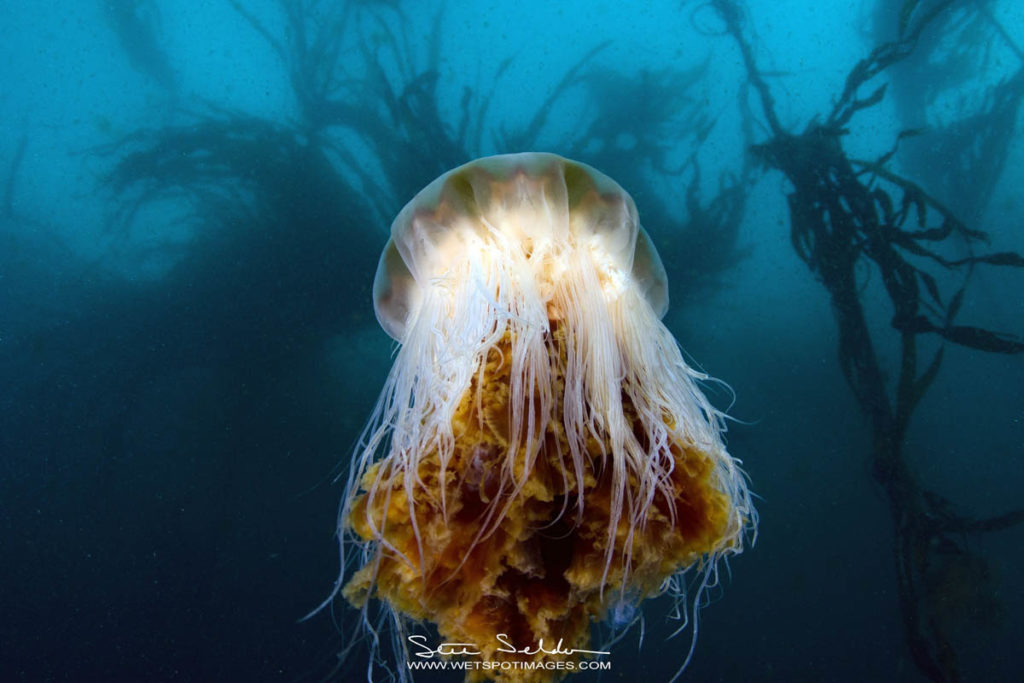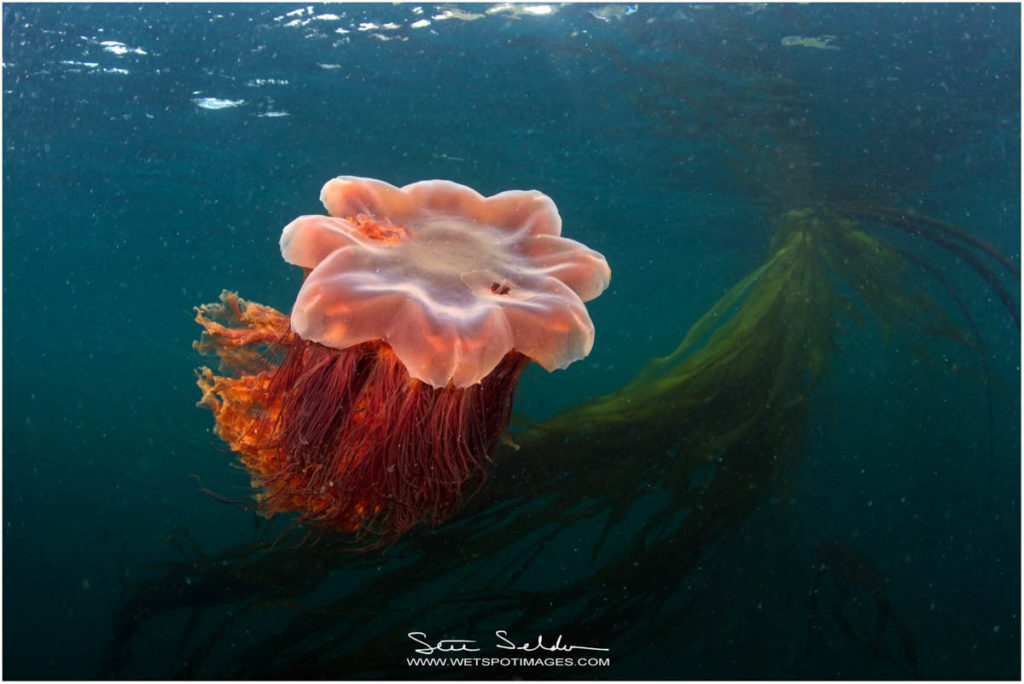Cyanea capillata aka Lion’s mane jellyfish is named for its showy, trailing tentacles reminiscent of a lion’s mane. Eight lobes are scalloped into the bell of the lion’s mane jellyfish and each lobe contains 70 to 150 tentacles arranged in four fairly distinct rows. A balance organ at each of the eight indentations between the lobes helps the jellyfish orient themselves. Broad frilly oral arms with many stinging cells extend from the central mouth. The total number of tentacles is around 1,200 closer to his mouth. Though capable of reaching a bell diameter of over 2 m (6 ft 7 in), those found at lower latitudes are much smaller than their far northern counterparts, with a bell diameter of about 50 cm (20 in). They can vary greatly in size. The Lion’s Mane Jellyfish is also referred to as the giant jellyfish, arctic red jellyfish, or hair jelly and is one of the largest known species of jellyfish.
Although some are found in the English Channel, the Irish Sea, the North Sea, and in western Scandinavian waters, the Lion’s Mane Jellyfish prefer the cold, boreal waters of the Arctic, northern Atlantic, and northern Pacific Oceans. These jellyfish may also drift into the southwestern part of the Baltic Sea (where they cannot breed due to low salinity). It is known that similar jellyfish, which may be the same species, inhabit seas near Australia and New Zealand.

Seabirds, larger fish such as ocean sunfish, other jellyfish species, and sea turtles are the predators of the Lion’s Mane Jellyfish. During the summer season around Eastern Canada, the leatherback sea turtle feeds almost exclusively on them in large quantities. The jellyfish themselves feed mostly on zooplankton, small fish, ctenophores, and moon jellies.
Most sting encounters from Lion’s Mane Jellyfish cause temporary pain and localized redness. Their stings are not known to be fatal in normal conditions, and in healthy individuals. Vinegar can be used to deactivate the nematocysts, but medical attention is recommended after exposure because of the large number of tentacles. There may, however, be a significant difference between touching a few tentacles on a beach with your fingertips and accidentally swimming into one. More strange than painful, the initial sensation feels like swimming in warmer and somewhat effervescent water. Some minor pains will follow soon. There is usually no real danger to human beings (with the exception of people with special allergies). But in cases where not only the longest tentacles but the entire jellyfish (including the inner tentacles, of which there are around 1,200) have stung someone over large parts of their body, medical attention is recommended as systemic effects may be present. Although rare, severe stings can also cause panic followed by drowning in deep water.

Q1 the popular television program claimed that the longest animal in the world was the Jellyfish Lion’s Mane. This was later corrected; a bootlace worm was found washed up on a Scottish shore in 1864. That claim has its critics: since bootlace worms can easily stretch to their natural length several times, it is possible that the worm did not actually grow to that length. (180 feet long)
Thanks Stuart Seldon of WetSpot Images for your Photographs





